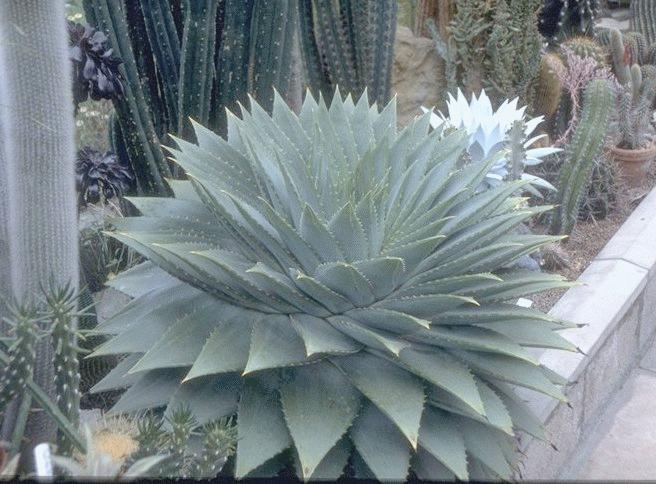
The spiral aloe is a rare and beautiful aloe from the high Maluti Mountains of Lesotho, South Africa. It does not occur naturally anywhere outside Lesotho with the exception of one record on the Lesotho border with the Free State. And one of the reasons that
Aloe Polyphylla is rare plant is that normally, it is extremely difficult to grow in cultivation. Plants which have been removed from their habitat usually do not survive for more than a few years. Besides, it is a criminal offence to remove plants or seed of Aloe polyphylla from the natural habitat or to buy plants from roadside vendors. Anyway, you can buy it from US nurseries. Some of them can grow it now.

However, this plant looks interesting becuase of the perfect spiral in which the leaves are arranged. This may be clockwise or anti-clockwise. The spiral is formed by five ranks of leaves which contain between 15 and 30 leaves each. The plants are stemless and usually not multiple although they grow in dense groups. It has become a prized collector's item and is possibly also used for muthi. Due to this and the specific habitat requirements, the numbers in the wild have diminished and it is now listed as endangered. The change in the water regime due to overgrazing is also a possible reason for decreasing numbers. Natural regeneration is from seed as the plants do not form off-shoots.
Aloe polyphylla grows in high altitude grassland, between 2000 and 2500 metres - sometimes higher - although apparently only on the more easterly facing slopes at these

higher altitudes. This could be due to the cold, where it may be important for the plants to receive early morning sun in winter. The spiral aloe grows in basalt rock crevices on very steep slopes with loose rock which aids in keeping the plants very well drained. They often grow in the mist and cloud belt in Lesotho. Although soils are well drained, the plants here have a continual flow of water in the summer months. The rainfall is very high and the summers very cool at these high altitudes in Lesotho.
The leaves themselves are broad and have a grey-green colour. The tips usually become dark, purplish brown and are quite sharp. The margins are irregularly toothed. Plants have approximately 150 leaves each, which explains the name "polyphylla". "Poly" means "many" and "phylla" is Greek for "leaves". The flowers are attractive, ranging from dull red to salmon-pink. They may be yellow occasionally. The infloresence is branched with each flower head being quite compact. Plants usually flowers in spring and early summer.




